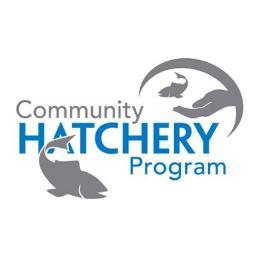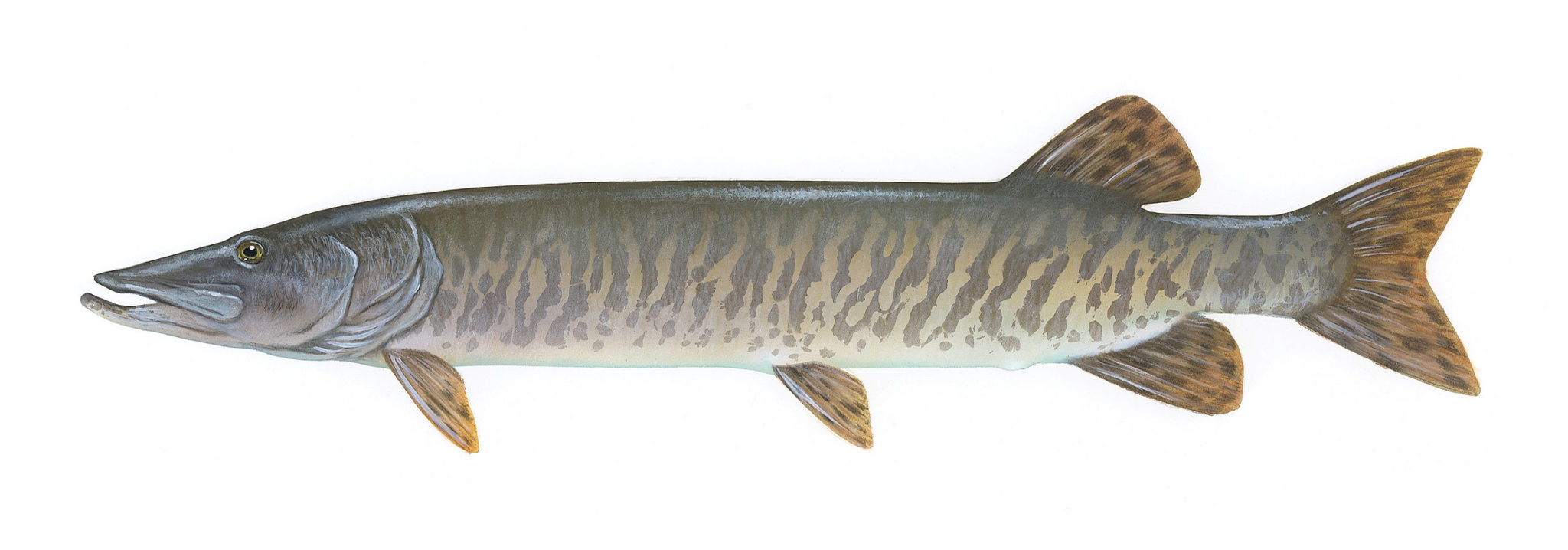Muskellunge
Esox masquinongyHome » Fish Stocking »
Muskellunge have an elongated body, much like their common cousin the northern pike, and the two are often confused. Musky have three different color patterns: spotted, barred and clear, although most fish tend to be a mixture. Look for vertical bands on a light background that is usually brighter and more iridescent than the northern pike. The underside of the jaw also has more pores than a pike; a musky usually has between 6-9 per side (between 12-18 total). The tail is also more pointed than a pike. It is important that these differences are recognized in waters that contain both pike and musky because the regulations are often quite different.
Common Names: muskellunge, muskie, musky, lunge
Habitat of the Muskellunge
The muskellunge range is relatively restricted as it is confined to waters around the Great Lakes, St. Lawrence River and Ottawa River, and in the western part of the province in the waters around Rainy Lake and Lake of the Woods. Muskellunge can inhabit both “walleye lakes” and “lake trout lakes”. In the walleye waters (shallow, stained, lots of vegetation), the fish associate with weeds such as water lilies, pondweed, cattails as well as stumps and timber. In deeper lakes containing lake trout and whitefish, these areas are utilized when available, but many of the walleye can be found around open water structures such as reefs and shoals.
Spawning Patterns of the Muskellunge
Musky spawn in the spring, usually between April and June, when water temperatures are 10-15 ºC (50-60 ºF). Spawning typically occurs in shallow weedy bays at depths less than 60 cm (2’) but has been noted to take place in deeper water in lakes that also have natural populations of northern pike. Eggs are scattered at random over the course of several days. A female may lay as many as 120, 000 eggs but the success rate is often only as high as 34% of the eggs actually hatching.
The Diet of the Muskellunge
The diet of these fish is mainly composed of other fish species such as perch, ciscoes, suckers, as well as other game species. To a lesser extent, but not uncommon, is for muskellunge to eat small mammals such as muskrats and mice as well as waterfowl, frogs and crayfish.
Age and Growth Ranges of the Muskellunge
Muskellunge are second only to lake sturgeon in the title for largest freshwater fish in Ontario. By November of their first year, a musky can reach the length of 30 cm (12”). Most fish encountered by anglers are between 75-115 cm (30-45”). A 20 lb musky can be between 8-12 years of age and the life expectancy being estimated at over 30 years.
Tips on Fishing for Muskellunge
Often referred to as the fish of a thousand casts, the musky is often a fish of folklore and legend. Due to restrictive regulations, the musky is considered a trophy sport fish with “C.P.R.” (Catch, Photo, Release) being the norm among the fishing community. It is important for the survival of released fish that proper handling techniques be employed. Casting and trolling account for the majority of the fishing effort. While many musky anglers use tackle that appears large to the uninitiated, many bass and walleye anglers have landed trophy musky on small spinner baits and jigs.
Muskellunge stocked since 2013
Stocking Statistics
| Year | Stocking Totals |
|---|---|
| 2024-2019 | 0 |
| 2018 | 1,682 |
| 2017 | 1,197 |
| 2016 | 579 |
| 2015 | 4,200 |
| 2014 | 2,254 |
| 2013 | 136 |
Matt Burley
Community Hatchery Program Coordinator
Ontario Federation of Anglers and Hunters
PO Box 2800
4601 Guthrie Drive
Peterborough, ON K9J 8L5
Phone: 705-748-6324 Ext. 247
Fax: 705-748-9577
E-mail: matt_burley@ofah.org
Want to volunteer?
Use the map below to locate a hatchery near you (click on the fish icon for hatchery details)
Note: These are just relative locations of each hatchery. To obtain actual locations please contact community hatcheries directly.
If the contact information is incomplete for any hatchery that you would like to contact, please contact the Community Hatchery Program Coordinator.

